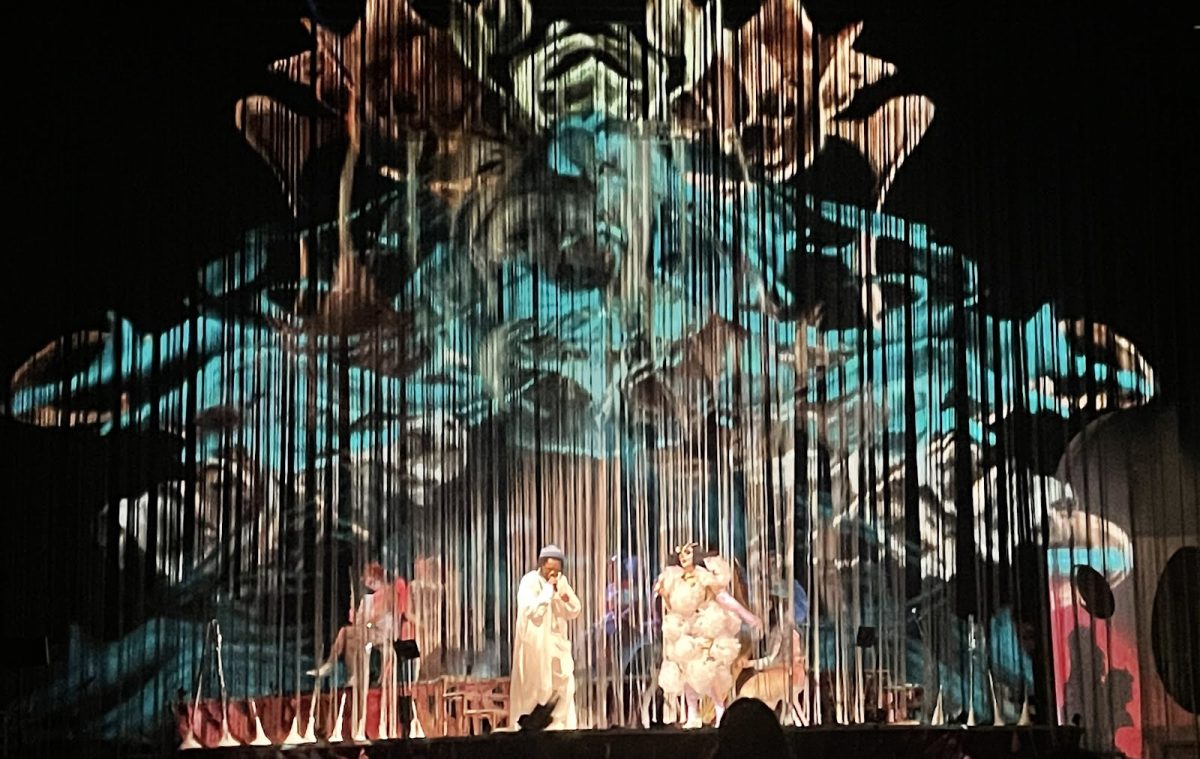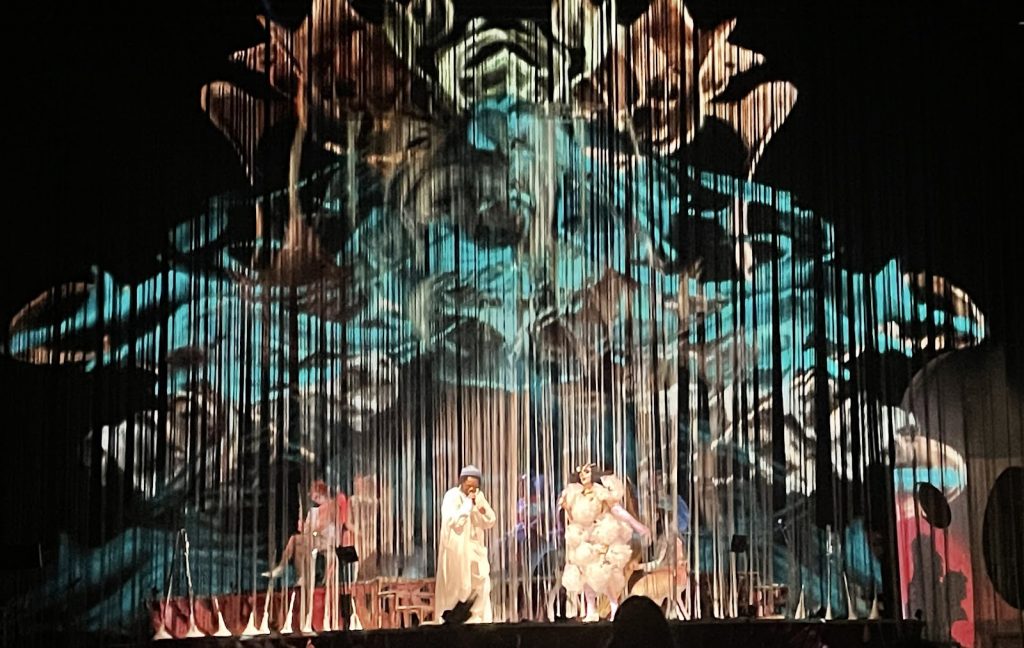
“I care for you.” —Björk, “The Gate”
The COVID pandemic has in many ways erased our institutional memory of what it was like to go to a Major Music Event.
Björk’s Cornucopia tour is an extravagant theatrical production that’s equal parts Kate Bush fantasia, a nature walk through Björk’s fevered Icelandic imagination and a feast for the senses aided by state-of-the-art sound design, digital visual tools and a backing “band.” (Living-room orchestra? “Band” doesn’t quite do it justice, as it included an Icelandic flute septet, an American harpist now living in Iceland, a digital sound designer and a percussionist—I use that term fairly loosely, as beats were nearly imperceptible this evening.)
Björk staged the fourth show of Cornucopia’s current American leg in San Francisco’s cavernous Chase Center on Saturday night. (The fifth and final show is tonight at Chase Center as well.) While there’s no doubt that Björk’s devoted fanbase brought its A-game to the show (I saw at least two swan dresses in attendance, but I’m sure there were more), cheering her every move, sound and shimmy, it was also equally clear that a huge part of the night’s sellout audience had likely been forcibly kept away from the live-music scene altogether over the past two years of pandemic lockdowns.
So the assembled crowd was ready for a spectacle. A spectacular. Something that might remind them of Big Nights Out from days gone by that involved babysitters, pregaming at a local bar and the over-the-top stagecraft we associate with a Really Big Show and, of course, the iconoclastic, one-of-a-kind human and voice that is Björk.
Well, that’s what we got. I’m unsure that I would really call it a “concert,” per se, although it could certainly pass for one. An 18-person chorale, dressed entirely in white robes (a la Dallas indie choir Polyphonic Spree), walked quietly onstage to perform stunningly beautiful opener “Family,” which was closer to vespers in a hushed church than a rock show in a sports arena. Then Björk herself made her semi-debut, emerging from backstage in a costume that can probably best be described as exploding-snowballs-haute-couture to sing 2017 composition “The Gate” from behind a curtain of fabric and light, reminding the audience, “I care for you,” as she began a nearly two-hour journey to the center of our minds. And hers. And what a wonderfully confusing place it is.
The majority of the night’s material was drawn from her most recent album, 2017’s Utopia (created in partnership with Venezuelan experimental electronic artist Arca), and its beatless, sculpted, ambient contours proved perfectly suited to the brilliantly chilly scene Björk set throughout the night.
Her flute septet played beautifully subtle filigrees behind her (supposedly Björk herself designed many of the oddly constructed instruments deployed throughout the evening, including twisted switchback flutes and percussion instruments that looked like someone playing turtle shells under a layer of water in a fish tank) on songs such as “Body Memory,” with lyrics that gave shape to the waking dream Björk attempts to capture in song:
“First snow of winter/I’m walking hills and valleys
Adore this mystical fog/This fucking mist
These cliffs are just showing off/Then the body memory kicks in.”
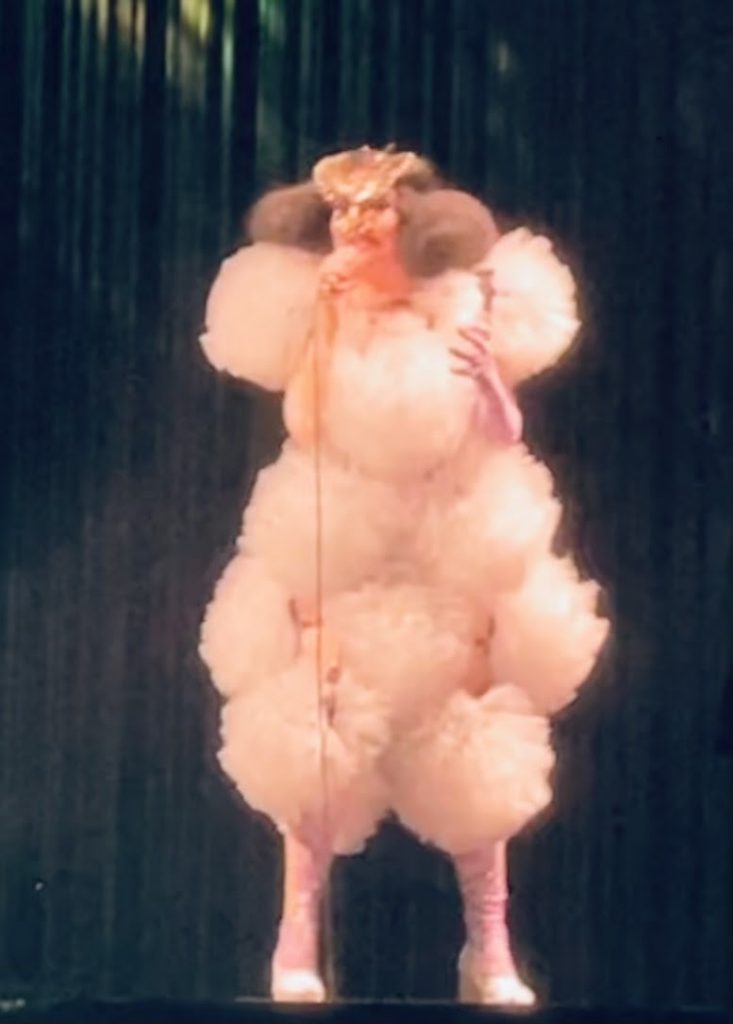
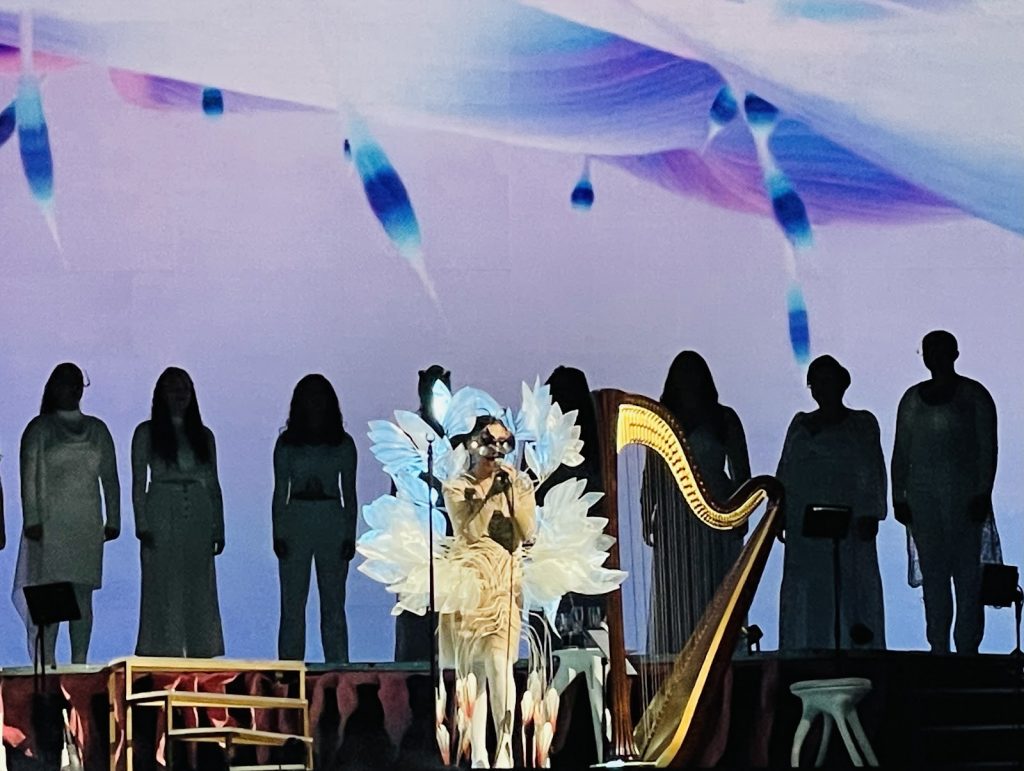
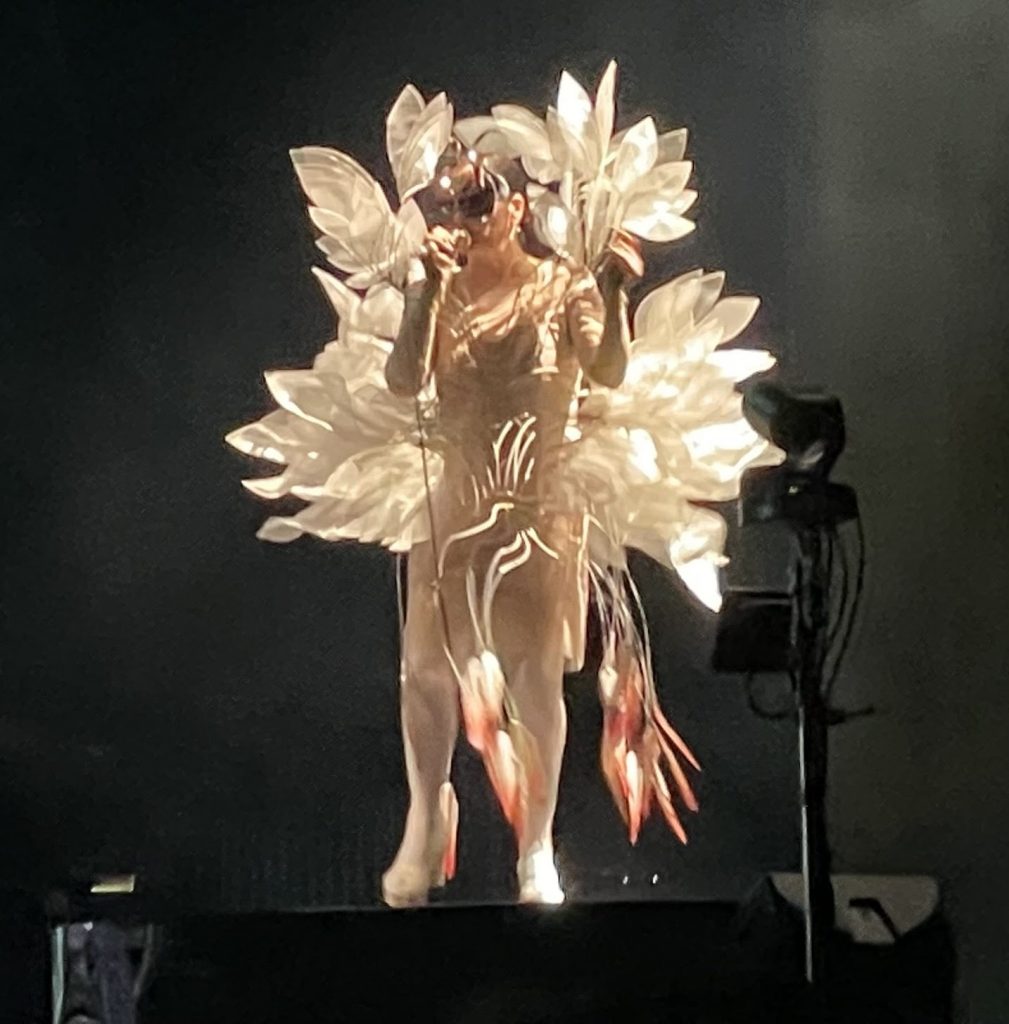
Let’s talk about this body-memory idea for a moment: What do we all remember doing at shows since time immemorial, when we first attended them? (Whatever genre or artist may have been concerned.) We danced; we got high; we laughed and maybe even loudly sang the songs we knew by heart. Well, that’s probably why this was more of a stage production than a true “show”: We didn’t really do any of those things. Songs from earlier in her career that her fans may have known much better (Debut’s “Venus As A Boy,” Post’s “Isobel,” Vespertine’s “Hidden Place”) were all utterly reimagined, nearly unidentifiable, with Björk treating the originals like just more wet paint on her palette to be added to the dreamscape she was creating literally right in front of us.
Björk would periodically retreat to an igloo-like soundbooth at the back of the stage, focused on relaying the intimate secrets of a song like “Claimstaker” as if in a one-on-one discussion with each of us in attendance before returning to the front of the stage. There, she would duet with one of her chorus, lead her flutists as if on a scavenger hunt for truth and beauty in a psychedelic winter forest or surround herself with a cone of lights to deliver the hidden messages embedded in “Tabula Rasa,” insisting that we “not repeat the fuckups of our fathers.”
This segued into the evening’s encore, which was very soberly introduced by a film from 19-year-old Swedish climate activist Greta Thunberg, who lectured us with a grimace that we were basically heading straight to oblivion and leaving her generation to fix an unholy planetary mess unless we get off our collective asses and start changing our errant ways right now. This stern rejoinder was followed closely by Utopia’s “Future Forever” and Vulnicura’s “Notget,” lest we lose our hope, our will and our optimism, with Björk (from beneath a costume change that looked like lilies flying like angel wings from her shoulders) urging everyone in the house to remember, “We are the guardians, we’ll keep her safe from death,” as the show drew to a close.
What an extraordinary way to end Cornucopia.
Was Björk bucking all of us up after the biggest, most traumatic interruption of our lifetimes to ensure that we understood that music, art and community would save us from the ravages of the pandemic, when so much loss has surrounded so many of us daily?
Was Björk re-emphasizing Thunberg’s message about earth’s impending meltdown, that we are her guardians, responsible for securing her safe passage into the hands of the next generation?
Björk will undoubtedly never truly tell us (maybe this is the subject of her next album, which she supposedly finished recording in Iceland mere weeks ago), but perhaps the clues to her intent could be found in a lighted message that was projected onto the stage’s fabric curtain midway through the show: “It’s like when nature and technology collaborate and make a song about it.”
Voilà.
Björk’s message—and the Cornucopia through line—revealed.
We had collectively spent a night quite literally at the feet of Björk—the artist—watching not a show, but a technicolor objet d’art whose value and meaning unfurled slowly throughout the night, like a banner waving in the wind, majestic even as the winds of change whip fiercely around her.
All of which, I’d say, constituted a pretty damn fine First Night Out for thousands of beautifully attired San Franciscans.
—Corey duBrowa


